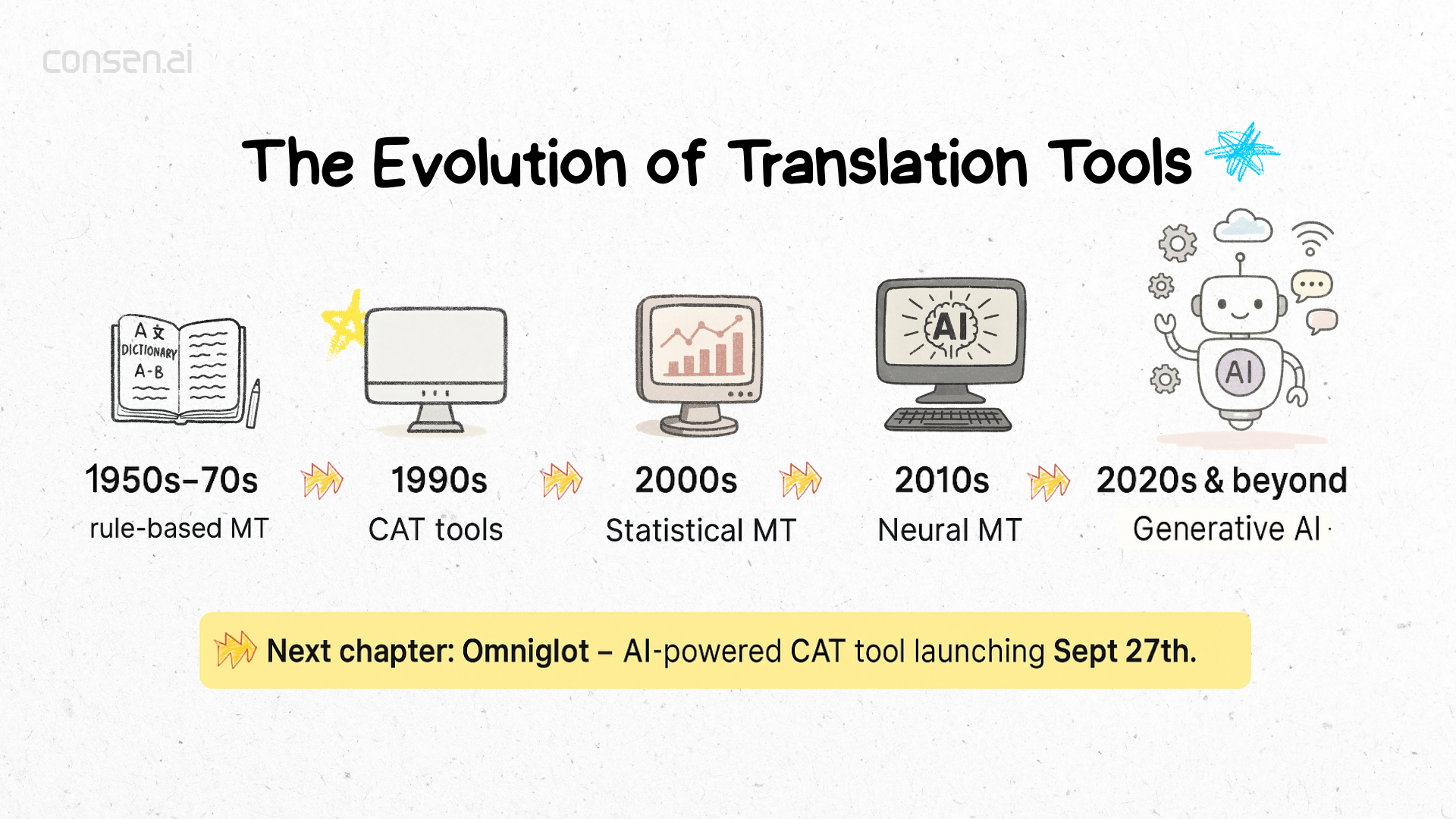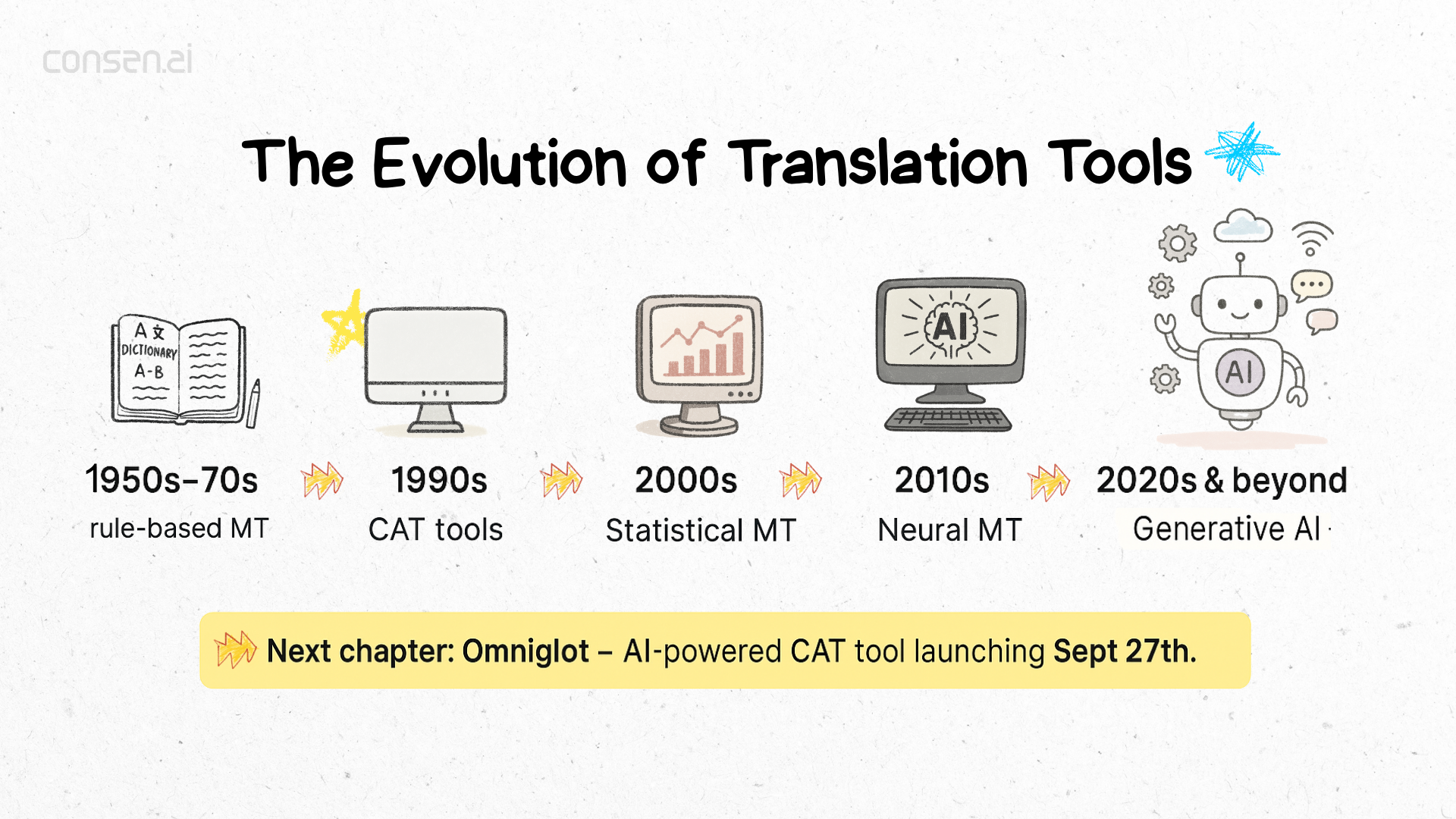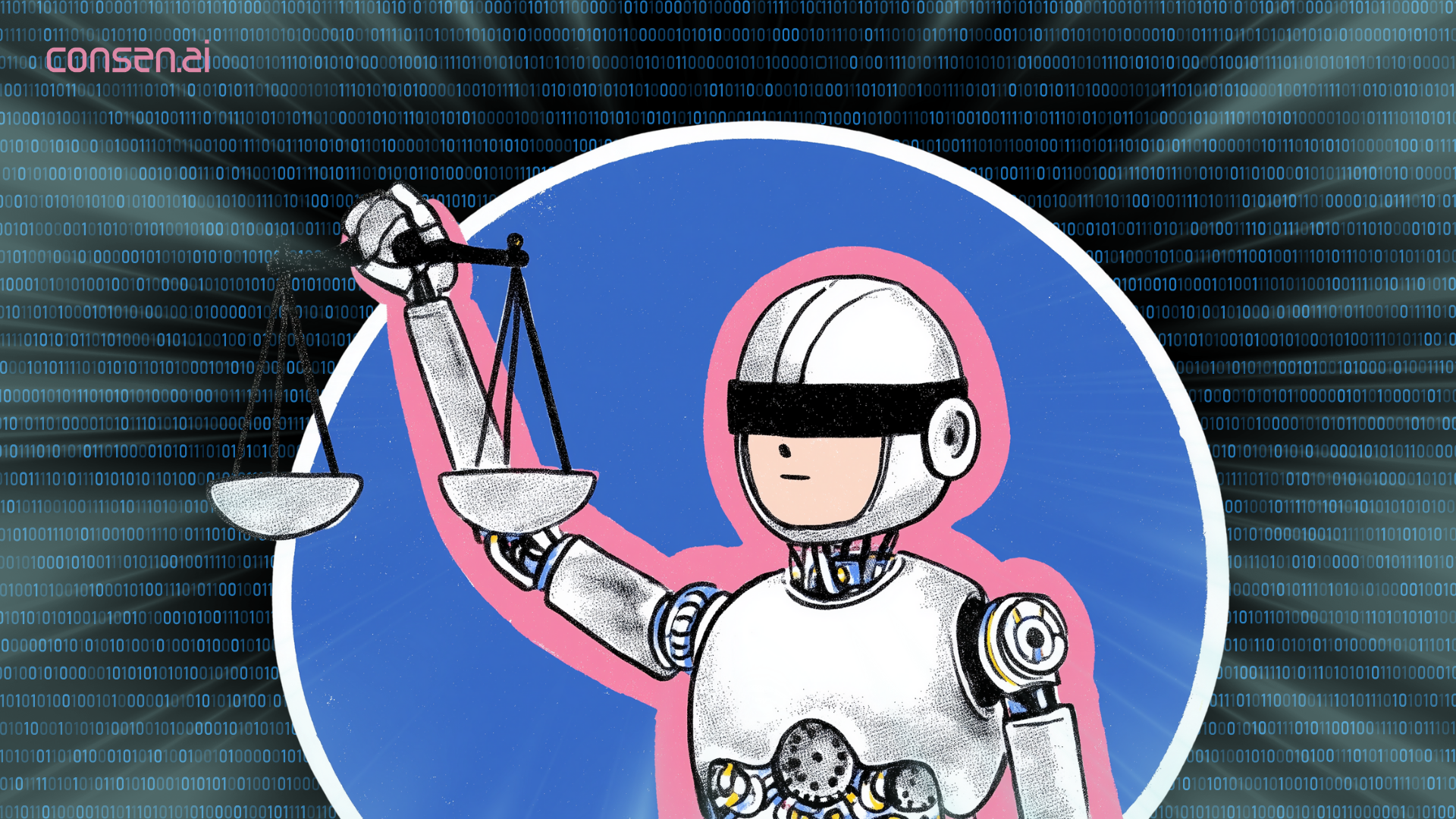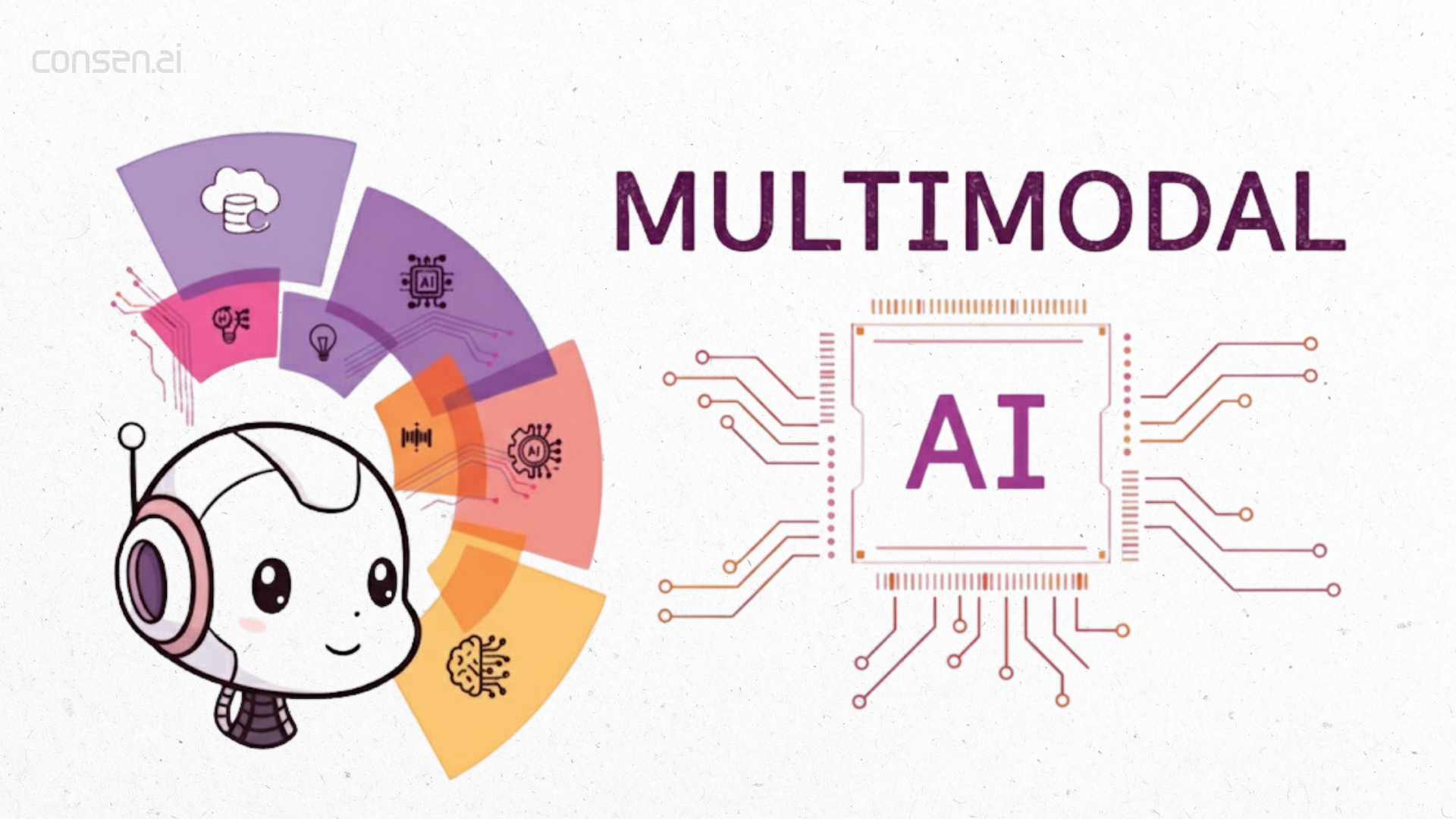Key Takeaways

- Translation tools have evolved significantly, from the humble dictionary to sophisticated AI-driven systems.
- CAT tools played a crucial role in improving translation efficiency during the 1980s and 1990s.
- The shift from Statistical Machine Translation (SMT) to Neural Machine Translation (NMT) represented a major technological leap, offering improved accuracy and fluency.
- Emerging trends suggest that generative AI will further revolutionize translation, enhancing global communication.
- Advanced translation technologies continue to break down language barriers, promoting globalization and cultural exchange.
The Evolution of Translation Tools: A Snapshot
Imagine a world where language barriers disappeared, allowing cultures to connect seamlessly. That's the magic of translation tools. Over time, these tools have evolved dramatically, transforming how we communicate globally. From the humble beginnings of traditional dictionaries to the sophisticated AI-driven solutions we use today, each step in this journey has played a pivotal role in bridging linguistic divides.
In the early days, translators relied heavily on printed dictionaries. These hefty tomes like the Oxford English Dictionary or Larousse were the go-to resources for anyone trying to interpret a foreign language. However, while comprehensive, they were cumbersome and limited by their static nature—no updates or contextual nuances. It was like trying to cook a gourmet meal with a single recipe card.
Fast forward to the digital age, and Computer-Assisted Translation (CAT) tools emerged in the 1980s and 1990s, revolutionizing the field. Tools such as Trados and Wordfast became invaluable, enhancing translation efficiency by storing previously translated phrases and suggesting them in future projects. This was a game-changer, like having a personal assistant who never forgets a word.
Then came Statistical Machine Translation (SMT), which marked a technological leap forward. Early models of Google Translate utilized vast amounts of data to predict the best possible translations, albeit with mixed results in terms of accuracy. It was like having a friend who tries to speak your language but occasionally mixes up words.
Today, Neural Machine Translation (NMT) is the star of the show. Systems like DeepL and Google NMT offer translations that are not only more accurate but also more fluent, closely mimicking natural speech patterns. It's akin to having a bilingual companion who effortlessly switches between languages. As we explore each phase of this evolution, you'll see how these tools have not only shaped our past interactions but continue to influence the future of global communication.
Dictionaries: The Original Language Bridge
Once upon a time, the humble dictionary was the go-to tool for anyone looking to navigate the labyrinth of foreign languages. Whether it was the Oxford English Dictionary sitting grandly on a bookshelf or the compact Larousse tucked into a student's backpack, these tomes were indispensable. They were the original language bridge, connecting people across cultures long before the internet made our lives a tad easier.
Let's face it, though: relying solely on dictionaries was like trying to solve a puzzle with half the pieces missing. Sure, they offered meanings and translations, but context? Nuance? Those were often lost in the shuffle. It wasn't just about flipping pages; it was about deciphering a whole new world.
Imagine spending hours looking up each word, carefully piecing together sentences, only to realize the essence of the message was still elusive. The process was not only time-consuming but also exhausting, especially with complex languages where a single word could have multiple meanings depending on its usage.
These challenges highlighted a glaring need for more sophisticated tools, which eventually led to the rise of Computer-Assisted Translation (CAT) tools. These tools built on the foundation laid by dictionaries, making translation faster and more efficient. But before we dive into that world, let's appreciate the role dictionaries played as the unsung heroes of language learning and translation.
Revolutionizing Translation: The Rise of CAT Tools
Imagine a time when translators had to flip through bulky dictionaries, word by word, just to make sense of a foreign text. Fast forward to the late 20th century, and you'll find a game-changer in the world of language translation: Computer-Assisted Translation (CAT) tools. These tools didn't just streamline the translation process; they revolutionized it.
CAT tools like Trados and Wordfast emerged as heroes in the translation industry. They introduced features like translation memory, which allowed translators to reuse previously translated content, ensuring consistency and saving time. No more starting from scratch every time! Plus, terminology management features helped maintain the right terms across different documents, a boon for technical and specialized translations.
Think about it: efficiency and consistency are the names of the game in professional translation. With CAT tools, translators could handle larger projects with increased accuracy, addressing the limitations of traditional dictionaries. This wasn't just about doing things faster; it was about doing them better.
But it wasn't all smooth sailing. Early CAT tools required a learning curve and a certain level of tech-savviness. However, the benefits—like reducing repetitive tasks and improving translation quality—far outweighed the initial hurdles. As translators became adept at using these tools, the translation industry witnessed a surge in productivity and quality.
Curious about how technology continues to shape translation? Dive into our next section on Statistical Machine Translation and discover the next leap in translation technology.
The Leap Forward: Statistical Machine Translation
Statistical Machine Translation (SMT) was a game-changer in the world of translation technology when it hit the scene in the early 2000s. Imagine a world where translation didn't rely solely on human intuition or traditional dictionaries, but instead on complex algorithms that could analyze large amounts of bilingual text. That's what SMT brought to the table. It was like giving translation its very own superpower, capable of processing vast quantities of data to produce translations that were faster and more cost-effective.
One of the most famous examples of SMT in action is Google Translate. Launched by Google in 2006, it revolutionized how we think about language barriers. The tool used statistical models, meaning it looked for patterns in texts that had already been translated by humans. The more data it had, the better it got. This was a huge shift from relying on rule-based systems that required meticulous programming.
The advantages of SMT were clear. For one, it significantly reduced translation costs and increased speed, allowing businesses and individuals to communicate across languages more easily than ever before. It was particularly impressive with straightforward, technical texts where patterns were more predictable. However, SMT wasn't without its drawbacks. It struggled with the nuances and subtleties of language—think idioms, cultural references, and humor. These are areas where human translators still held the upper hand.
In essence, SMT marked a major technological advancement, bridging a gap between human translation capabilities and the potential of machine learning. While it wasn't perfect, it paved the way for even more sophisticated systems like Neural Machine Translation (NMT). To learn more about how translation tools evolved further, check out our discussion on The Advent of Neural Machine Translation.
Neural Machine Translation: A New Era in Accuracy
Imagine a world where language barriers melt away with a simple click. That's the promise of Neural Machine Translation (NMT), the latest evolution in the translation landscape. Unlike its predecessors, NMT leverages the power of deep learning and neural networks to deliver translations that are not just accurate, but also fluid and contextually relevant. It's like having a savvy human translator at your fingertips.
Take DeepL, for instance. This system is renowned for its ability to understand the subtleties of language, delivering translations that feel incredibly natural. By using neural networks, DeepL can better grasp the nuances of phrases and idioms that often trip other translation tools. Similarly, Google NMT has transformed the landscape by continually learning from vast amounts of data, improving with every use.
So, how does this magic happen? At the core of NMT is its architecture, which mimics human neural pathways. This allows the system to predict the next word in a sentence, enhancing its ability to generate coherent and contextually appropriate translations. The result? An impressive leap in handling complex language structures and capturing the essence of the original text.
Neural Machine Translation doesn't just stop at accuracy; it opens the door to real-time, effortless communication across languages. As we look to the future, the integration of NMT with other technologies promises even greater advancements in global communication.
From Dictionaries to AI: The Future of Translation
It's fascinating to think about how far we've come from the days of flipping through thick dictionaries in search of the right word. Back then, translating a single sentence could feel like a treasure hunt, with every page turn bringing a mix of hope and frustration. But these trusty companions laid the foundation for everything that followed.
Fast forward a few decades, and we saw the rise of Computer-Assisted Translation (CAT) tools, which made life a bit easier for translators by offering suggestions and reducing repetitive tasks. Then came the game-changing Statistical Machine Translation (SMT), where algorithms took over, analyzing vast amounts of data to provide translations. It was like moving from a bicycle to a sports car in terms of speed and efficiency.
Now, we're in the era of Neural Machine Translation (NMT), where AI mimics the way the human brain learns languages. These systems don't just translate word-for-word; they understand context and intent, making translations sound more natural and human-like. Tools like DeepL and Google's NMT have set new standards, blending speed with remarkable fluency.
Looking ahead, the future seems just as exciting. With the rise of Generative AI, there's potential for even more personalized and context-aware translations. Imagine a tool that not only translates your words but captures your style and tone, almost like having a trusted translator by your side, who knows you well.
This continuous evolution isn't just about technology for technology's sake. It's about breaking down language barriers and fostering better global communication. As these tools become more accessible, they'll play an even bigger role in connecting cultures and facilitating understanding in our ever-shrinking world.
Envisioning the Future of Translation Technology
Imagine a world where language barriers are a thing of the past. This is not just a dream but a very probable future thanks to ongoing advancements in AI and multimodal translation technologies. We're on the brink of a revolution where translation tools are not only faster but incredibly accurate, capturing the essence and emotion of languages across different formats—whether it's text, speech, or images.
The potential breakthroughs in this field are nothing short of exciting. With real-time translation becoming more sophisticated, we could soon see AI-powered devices that seamlessly integrate into our daily lives, offering instant translation in business meetings, social gatherings, and even personal conversations. Such innovations could foster deeper international collaboration and understanding, essentially bringing the world closer together.
As we look forward, it's not just about overcoming language barriers, but about enhancing the way we interact globally. These technologies could lead to an unprecedented level of inclusivity, allowing people from all walks of life to communicate effectively without the fear of being misunderstood. The future is bright with possibilities, and as these tools evolve, so will our capacity for empathy and connection across different cultures and languages.
And now is your turn: Do you believe generative AI translation will replace human translators or just make their work easier?
👉 Share your thoughts in the comments below—we’d love to hear from you!Subscribe to our blog for more insights on AI, translation tools, and the future of global communication.
Thank you for reading!


